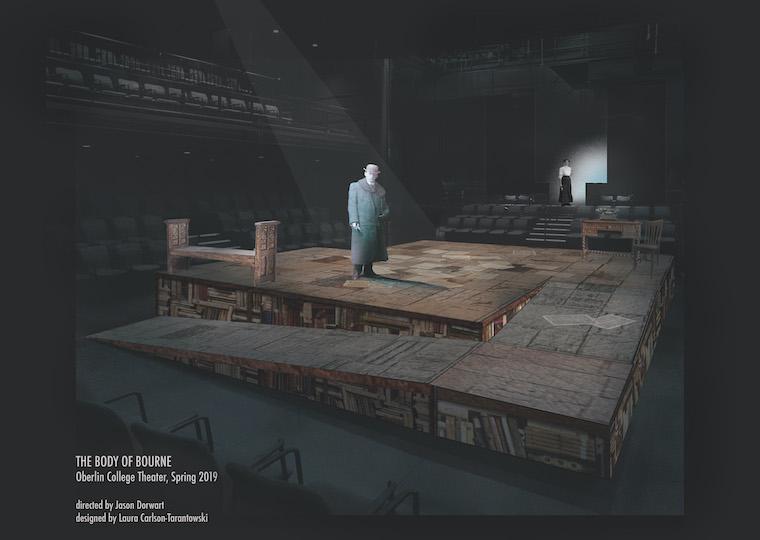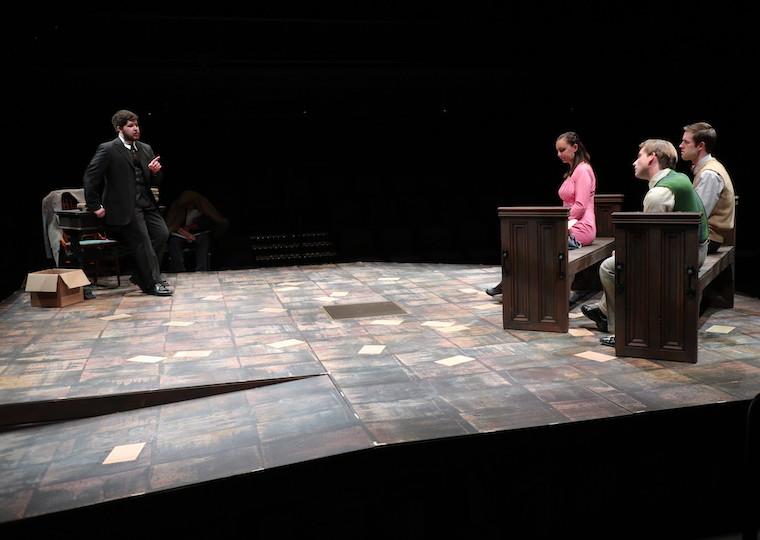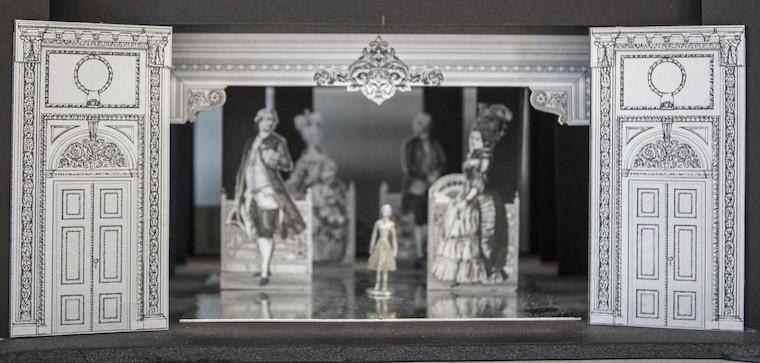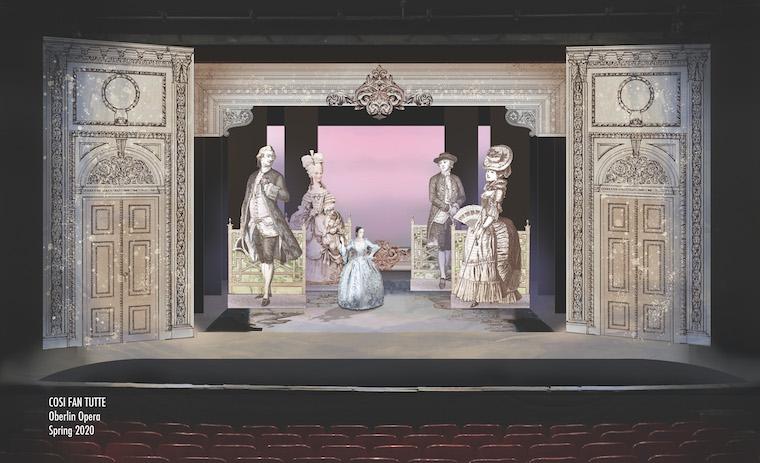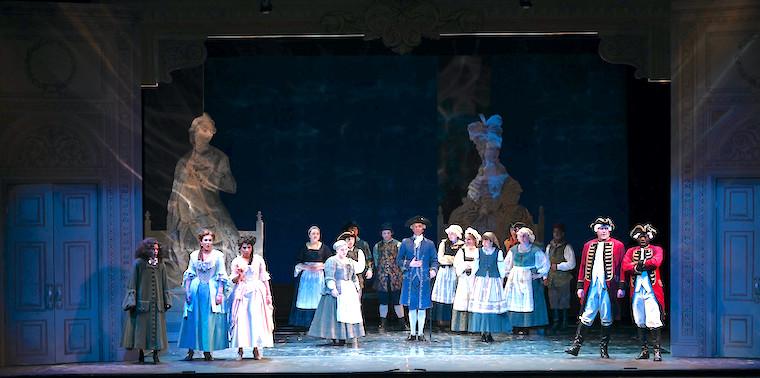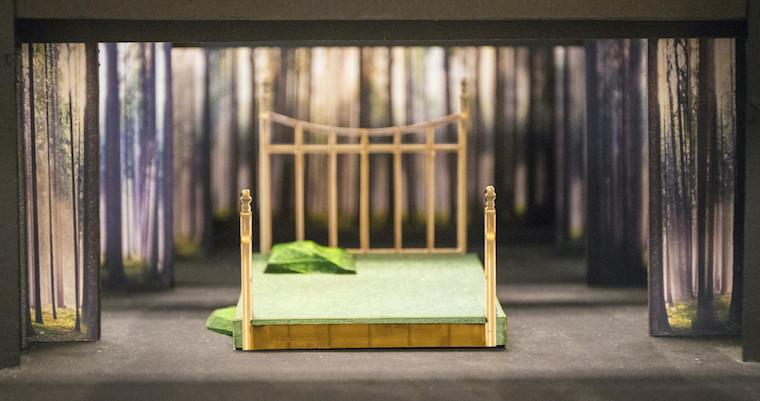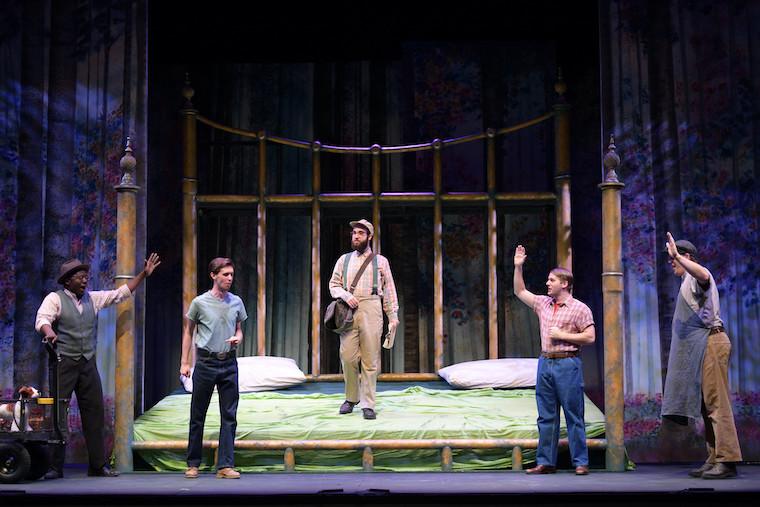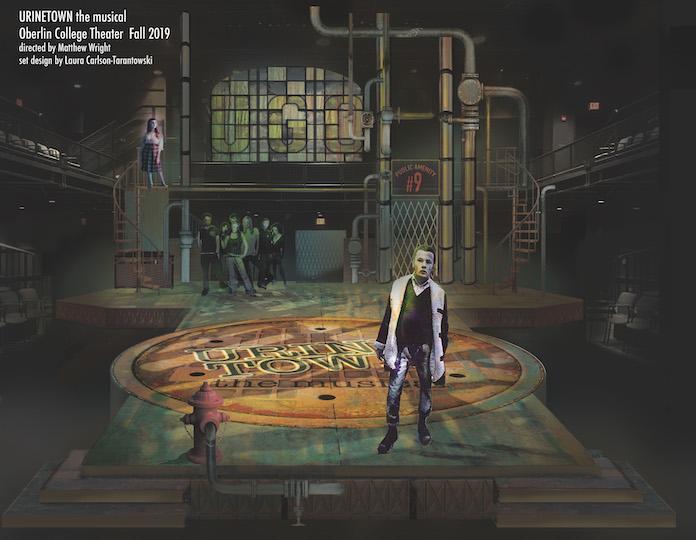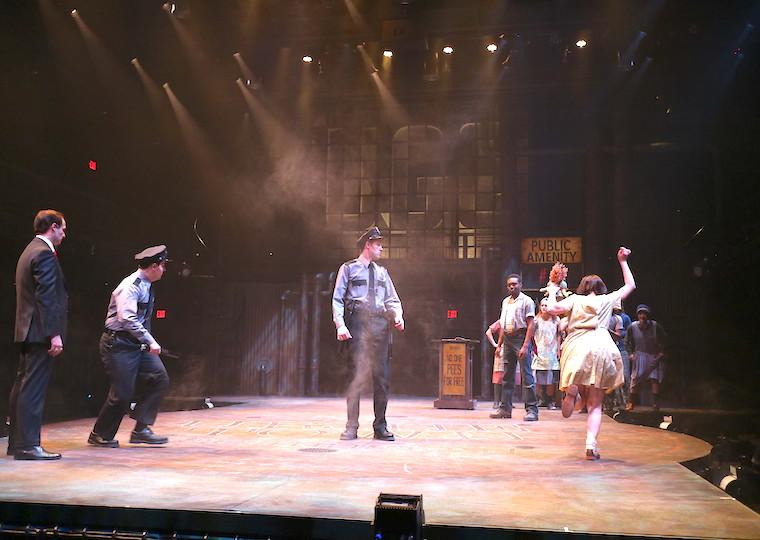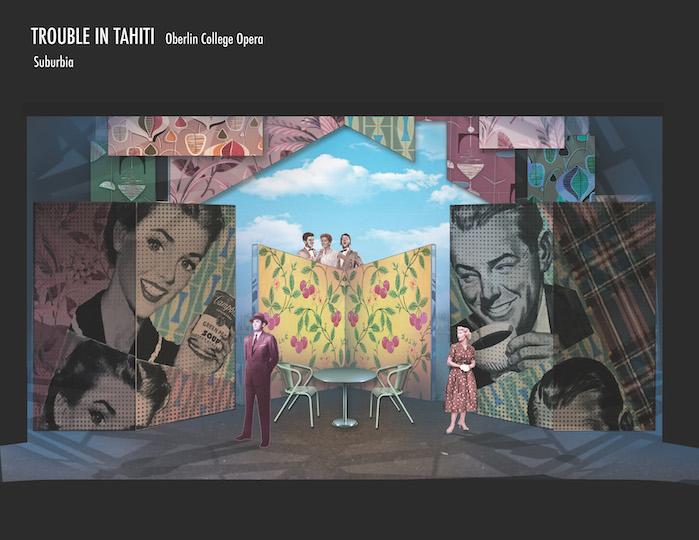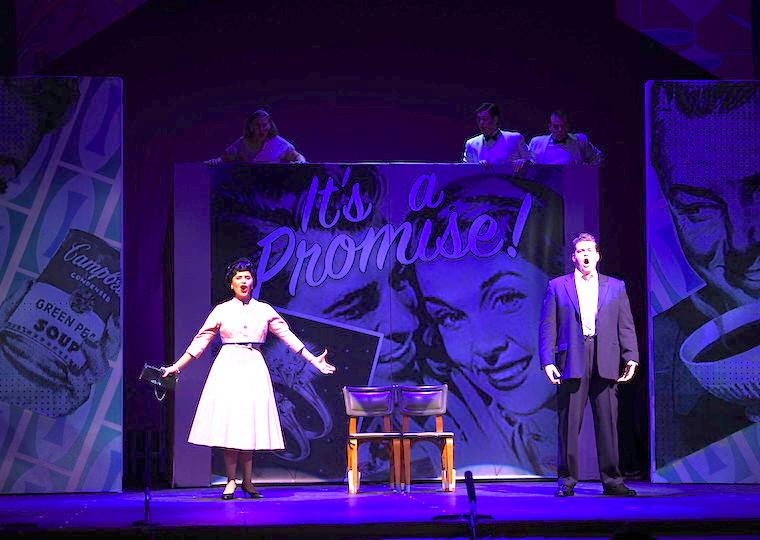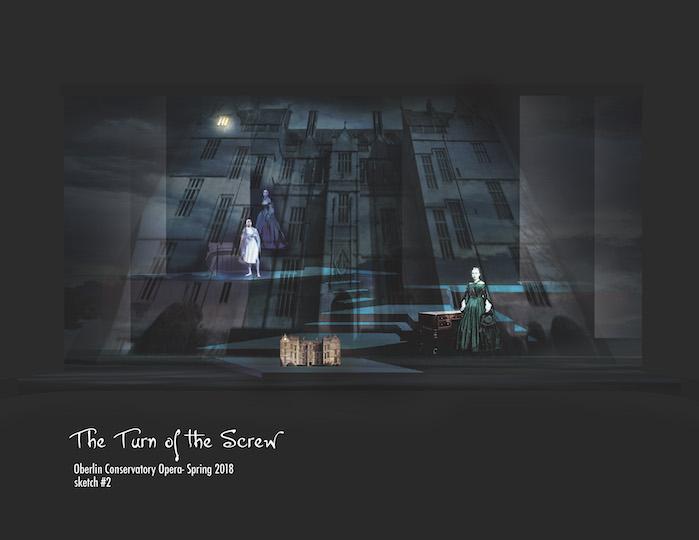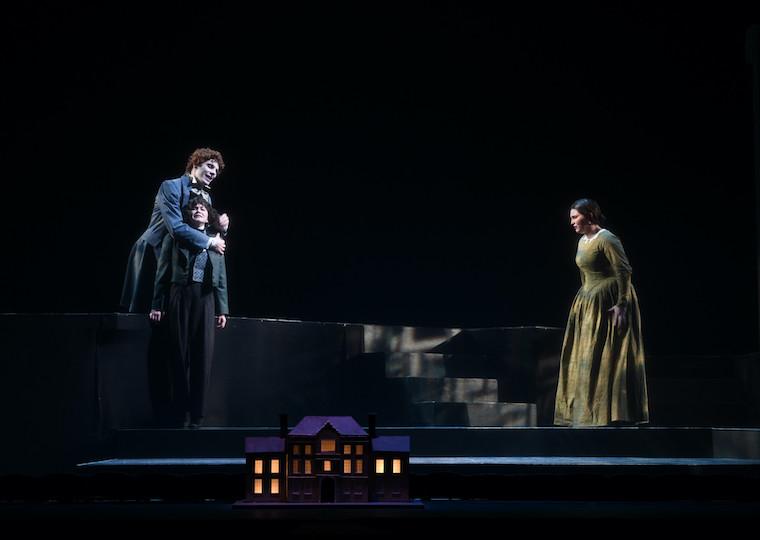Campus News
Behind the Scenes
June 26, 2020
Yvonne Gay
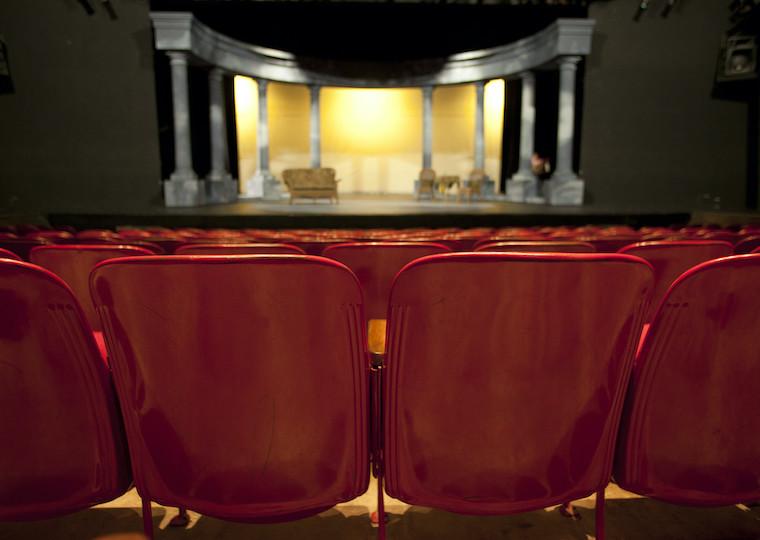
A bookcase in a theater department classroom is filled with small brown boxes, each with one open panel and a sheet of flat black cardboard in front. A peek inside reveals a tiny world of paper sculptures and hand-drawn mountains and trees.
“This is mostly spring semester work from the first half of my introduction to scene design class,” explains Laura Carlson-Tarantowski, scenic designer and lecturer in the theater department. “The class focuses largely on the creative process used to develop three-dimensional models. We explore all the steps [of the process], paying particular attention to developing and communicating visual ideas inspired by the themes and content of a text.”
With nearly one dozen theater and opera productions held at Oberlin College each year, there are many opportunities for students to take part in the process. Student workers can be found in the scene, paint, and costume shops, as well as with sound and lighting.

Carlson-Tarantowski has designed more than 20 sets since coming to Oberlin in 2016. Prior to joining the department she was responsible for 20-plus large-scale musicals at Dobama Theater, Beck Center for the Performing Arts, Cesear’s Forum, and Cain Park. The sets designed for productions at Oberlin range from sophisticated levels and platforms to small neighborhoods complete with residential fronts and porches built to scale. All this work reflects the collective efforts of the director, designer, artist, painters, carpenters, and costume and lighting departments, who start on these projects six months in advance.

“The process begins with the text and the director’s point of view. Analysis of the script, inspirational images, period research, and conceptual ideas are collected and discussed and eventually become the visual language for the production,” explains Carlson-Tarantowski, who will often create several different versions of a set or part of a set in model form so that she, the design team, and the director can better visualize the ramifications of different choices.
“As ideas firm up, the set designer creates color sketches that suggest how the set might look when painted and furnished and finally, scale technical drawings are produced,” she continues. “The technical director will then take those drawings and interpret and adjust them for the carpenters in the scene shop and oversee the building process. Budgeting is a big part of the design process. We have to take into consideration the cost of a set in terms of materials, time, and labor well before actual construction begins.”

This is where Joseph Natt, senior technical director of theater, opera, and dance comes in.
Natt uses the drawings and 3D model that the set designer creates to price building materials. In order to make the cost of the set fit within the budget, adjustments to the design may be made. Once the budget is reconciled, and scenic elements are prioritized, construction begins. Set construction is typically completed in about six weeks.

All of the technical elements of the production are brought together with the actors in dress rehearsal during “tech week,” where the theater team can take notes for adjustments and make finishing touches to the set.
Many of the sets that are designed and constructed in the theater department present their own challenges. The two that stand out for Natt was the 2013 production of Die Fledermaus, which required the development of multiple sets. The other was the 2015 production of Street Scene.
“We ended up building a multi-floor apartment building with a main door, center stairwell, and below-street-level apartments,” recalls Natt. “It was covered in brick, had large crown molding, windows that opened and closed, and was divided into several different apartments. We framed it and constructed it as you would a real house. It was very large and it took a lot of hours and material to construct.”

Construction projects can also overlap, particularly in the fall, when crews are finishing the build for the annual opera and starting technical rehearsals, while at the same time building the set for the fall theater production. But these are all challenges that come with the world of theater.
“I always like working with my hands,” says Natt. “When I was growing up, I was always helping my dad work on cars and other things. Then when I went to school at Kent State University and got a degree in set design and technology, I realized that I was more interested in figuring out how to build and construct designs than designing them. So I enjoy carpentry in a more basic sense. I am not one to build you a beautiful rocking chair, but rather, build you the room for you to sit in and enjoy that rocking chair. Obviously seeing the final set constructed and seeing it as the designer and the director envisioned it gives me a sense of pride.
“I think if any or all of the elements can pull the audience in and they forget that they are sitting in the theater, our job is complete. So for set carpenters, if we can build the scenery the way the designer and director intended, then the audience will be drawn in.”
The collaborative nature of theater design and the excitement of seeing ideas come to life is something Carlson-Tarantowski enjoys. She plans to teach Scene Design II in the spring and welcomes students interested in scenic design to contact her for opportunities in and outside of the classroom.
Photo Gallery
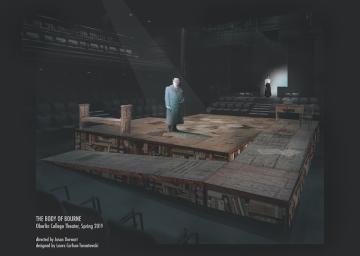
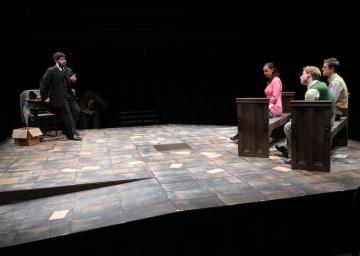
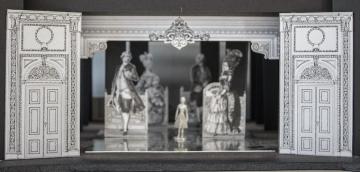
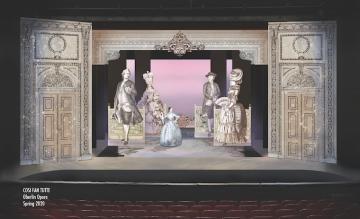
Tags:
You may also like…
Oberlin Conservatory Community Mourns the Loss of Retired Professor Monique Duphil
March 19, 2025
Monique Duphil, who spent more than 30 years as a member of Oberlin Conservatory’s piano faculty, has passed away. Duphil is remembered by colleagues for her contributions to the piano program...
Nominate Candidates for 2025 Distinguished Service Award
October 22, 2024
All nominations must be submitted by November 18.
Shirley Sikora, Night Manager of the ’Sco, Dies at 65
June 11, 2024
Longtime employee was beloved by student workers and all who frequented the Wilder Hall club.
